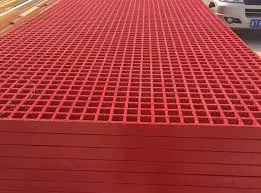
-
 Afrikaans
Afrikaans -
 Albanian
Albanian -
 Amharic
Amharic -
 Arabic
Arabic -
 Armenian
Armenian -
 Azerbaijani
Azerbaijani -
 Basque
Basque -
 Belarusian
Belarusian -
 Bengali
Bengali -
 Bosnian
Bosnian -
 Bulgarian
Bulgarian -
 Catalan
Catalan -
 Cebuano
Cebuano -
 China
China -
 China (Taiwan)
China (Taiwan) -
 Corsican
Corsican -
 Croatian
Croatian -
 Czech
Czech -
 Danish
Danish -
 Dutch
Dutch -
 English
English -
 Esperanto
Esperanto -
 Estonian
Estonian -
 Finnish
Finnish -
 French
French -
 Frisian
Frisian -
 Galician
Galician -
 Georgian
Georgian -
 German
German -
 Greek
Greek -
 Gujarati
Gujarati -
 Haitian Creole
Haitian Creole -
 hausa
hausa -
 hawaiian
hawaiian -
 Hebrew
Hebrew -
 Hindi
Hindi -
 Miao
Miao -
 Hungarian
Hungarian -
 Icelandic
Icelandic -
 igbo
igbo -
 Indonesian
Indonesian -
 irish
irish -
 Italian
Italian -
 Japanese
Japanese -
 Javanese
Javanese -
 Kannada
Kannada -
 kazakh
kazakh -
 Khmer
Khmer -
 Rwandese
Rwandese -
 Korean
Korean -
 Kurdish
Kurdish -
 Kyrgyz
Kyrgyz -
 Lao
Lao -
 Latin
Latin -
 Latvian
Latvian -
 Lithuanian
Lithuanian -
 Luxembourgish
Luxembourgish -
 Macedonian
Macedonian -
 Malgashi
Malgashi -
 Malay
Malay -
 Malayalam
Malayalam -
 Maltese
Maltese -
 Maori
Maori -
 Marathi
Marathi -
 Mongolian
Mongolian -
 Myanmar
Myanmar -
 Nepali
Nepali -
 Norwegian
Norwegian -
 Norwegian
Norwegian -
 Occitan
Occitan -
 Pashto
Pashto -
 Persian
Persian -
 Polish
Polish -
 Portuguese
Portuguese -
 Punjabi
Punjabi -
 Romanian
Romanian -
 Russian
Russian -
 Samoan
Samoan -
 Scottish Gaelic
Scottish Gaelic -
 Serbian
Serbian -
 Sesotho
Sesotho -
 Shona
Shona -
 Sindhi
Sindhi -
 Sinhala
Sinhala -
 Slovak
Slovak -
 Slovenian
Slovenian -
 Somali
Somali -
 Spanish
Spanish -
 Sundanese
Sundanese -
 Swahili
Swahili -
 Swedish
Swedish -
 Tagalog
Tagalog -
 Tajik
Tajik -
 Tamil
Tamil -
 Tatar
Tatar -
 Telugu
Telugu -
 Thai
Thai -
 Turkish
Turkish -
 Turkmen
Turkmen -
 Ukrainian
Ukrainian -
 Urdu
Urdu -
 Uighur
Uighur -
 Uzbek
Uzbek -
 Vietnamese
Vietnamese -
 Welsh
Welsh -
 Bantu
Bantu -
 Yiddish
Yiddish -
 Yoruba
Yoruba -
 Zulu
Zulu
frp composite panels
The Rise of FRP Composite Panels in Modern Construction
Fiber Reinforced Polymer (FRP) composite panels have gained significant traction in the building and construction industry in recent years. Known for their outstanding mechanical properties and durability, these panels are becoming increasingly popular as a choice for various applications, including building facades, roofing, and even interior design elements. This article delves into the characteristics, advantages, and applications of FRP composite panels, highlighting their role in modern construction.
Understanding FRP Composite Panels
FRP composite panels are made from a polymer matrix reinforced with fibers, commonly glass, carbon, or aramid. The combination of these materials results in a strong and lightweight product that can outperform traditional materials like steel and concrete in many aspects. For instance, unlike metal, FRP panels do not rust, and their resistance to corrosion makes them ideal for both indoor and outdoor use in varied climates.
Key Advantages
1. Lightweight yet Strong One of the most significant benefits of FRP composite panels is their lightweight nature. This characteristic not only simplifies transportation and installation but also reduces the structural load on a building. Despite their weight, these panels exhibit outstanding tensile strength and can take substantial loads without deformation.
2. Corrosion Resistance FRP panels are inherently resistant to a range of chemicals, including salts and acids, which makes them well-suited for environments that would otherwise compromise the integrity of traditional materials. This feature extends the longevity of structures using FRP panels, ultimately resulting in lower maintenance costs.
3. Thermal and Acoustic Insulation FRP composite panels provide excellent insulation properties, helping maintain energy efficiency in buildings. They can significantly reduce heat transfer and provide sound insulation, contributing to a quieter and more comfortable interior environment.
frp composite panels

4. Design Flexibility The versatility of FRP allows for extensive design possibilities. These panels can be molded into various shapes, colors, and textures, enabling architects and designers to achieve their aesthetic visions without compromising functionality.
5. Sustainability As the construction industry moves towards more sustainable practices, FRP composite panels stand out as an eco-friendly option. Many FRP panels are made from recycled materials, and their long lifespan further contributes to their sustainability profile.
Applications in Construction
The applications of FRP composite panels are vast and varied. In commercial construction, they are frequently used for architectural cladding, where both aesthetics and performance are crucial. Their resistance to moisture makes them ideal for use in bathrooms, kitchens, and even swimming pools.
In the industrial sector, FRP panels are increasingly employed in manufacturing facilities, refineries, and chemical plants due to their chemical resistance and durability. They also find significant use in the construction of bridges and infrastructure, where weight reduction without sacrificing strength is paramount.
Conclusion
FRP composite panels represent a significant advancement in construction materials, combining strength, durability, and design flexibility. Their ability to resist corrosion, insulate effectively, and provide design versatility positions them as a smart choice for modern building applications. As the industry continues to evolve, the usage of FRP panels is likely to expand, contributing to more innovative and sustainable construction practices. Whether for aesthetics or functionality, the future of FRP composite panels in construction is promising, offering solutions that meet the demands of contemporary architectural challenges.
Latest news
-
Exploring the Benefits of Top Hammer Drifter Rods for Enhanced Drilling PerformanceNewsJun.10,2025
-
High-Precision Fiberglass Winding Machine for GRP/FRP Pipe Production – Reliable & Efficient SolutionsNewsJun.10,2025
-
FRP Pipes & Fittings for Shipbuilding - Corrosion-Resistant & LightweightNewsJun.09,2025
-
Premium FRP Flooring Solutions Durable & Slip-ResistantNewsJun.09,2025
-
Premium Fiberglass Rectangular Tanks Durable & Lightweight SolutionNewsJun.09,2025
-
Tapered Drill String Design Guide Durable Performance & UsesNewsJun.09,2025









